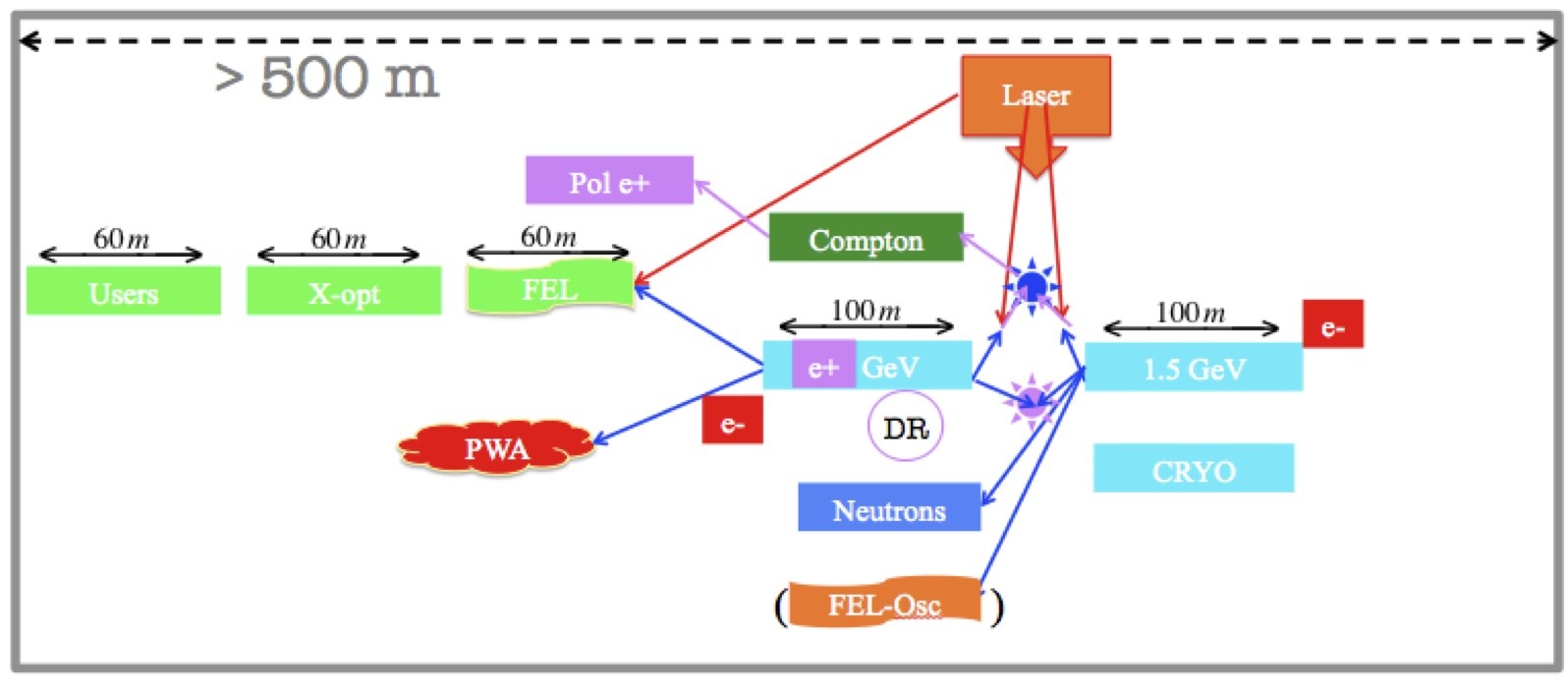Table of Contents
IRIDE-Interdisciplinary Research Infrastructure based on Dual Electron linac
a multi-purposes high brightness/luminosity linacs for fundamental and applied physics applications
A vigorous development of several initiatives in the international scenario, aiming at producing in the incoming years a new generation of machines, capable to deliver advanced beams of photons and neutrons in the context of integrated facilities for multi-disciplinary research, makes today possible to conceive a rich scenario of new physics to be pursued at a large infrastructure based on advanced Linacs and Lasers, where an evolutionary strategy of development may assure a future of advanced scientific achievements that may span from fundamental and high energy physics to nuclear physics in the era and with the new tools of nuclear photonics, to basic and applied science with a FEL. The backbone of such an evolutionary development of this integrated machine and infrastructure would be an underlying activity of research in advanced acceleration concepts (AAC), spanning from fifth generation synchrotron light sources development, to integration of plasma boosters with RF linacs, to designing and commissioning high luminosity linear colliders at various energy ranges.
The global structure of this project follows
The two superconducting LINACS can operate both with electrons and positrons and in both directions. With the first (rightmost) LINAC one can realize a compton source in association with a LASER, and, with appropriate target and beam line, a neutron source by photo-production. The compton photons are needed for national security and bio-medical applications, while the neutron source is used for material studies, chip irradiation and tomographies. Studies of the neutron properties (e.g. the EDM) could also be considered.
By operating the second LINAC with a different beam of electrons one can have collisions between the electrons and the photons produced by the compton source (e-photon collider) or one can use the additional electron beam to produce photons by compton scattering and have photon-photon collisions for fundamental QED studies.
By operating the second LINAC with positrons, e+e- collisions can be produced, allowing hadronic physics studies at center of mass energies between the phi and the psi. The possibility to tune the center of mass energy to allow muon collider studies is also under investigation.
By operating the second LINAC to further accelerate the electrons passed through the first LINAC and by adding ondulators, a high repetition-rate Free Electron Laser can be obtained. Such a high energy and intensity electron beam can also be exploited for Plasma Wake Field acceleration experiments.
This host of opportunities can be realized in a modular way. The interest (both from the applied and fundamental physics points of view), the feasibility and the cost of each piece is under study. The pages below collect the material produced on each topic.
Meetings
Brainstorming dec 12th 2012
Presentation in front of the INFN Directorate
Seminario @ "La Sapienza" pdf
Giornate di Studio 14-15 Marzo 2013 Web Site
Video streaming delle Giornate di Studio 14-15 Marzo 2013 streaming live
Riunione conveners 27/4/2013
Presentazione IRIDE a Torvergata 12/6/2013
Documents
IRIDE White Book:
- White Book full text http://www.lnf.infn.it/acceleratori/public/iride/IRIDE_White_Book.pdf
- Letters of interest http://www.lnf.infn.it/acceleratori/public/iride/endorsements.pdf
